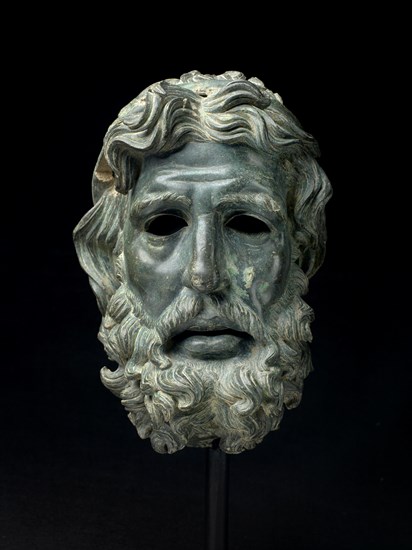Bronze Hellenistic portrait of Antigonos Doson, one of Alexander the Great's diadochi (successors) at the Museum of Fine Arts Houston, Texas
Bronze Hellenistic portrait of Antigonos Doson, one of Alexander the Great's diadochi (successors) at the Museum of Fine Arts Houston, Texas.
Larger-than-life-size Greek bronze statues were focal points of temples and important public places. Unfortunately, few ancient statues have survived in complete form. Distinguishing attributes and characteristics are often missing, so coins of the period are an important source for identifying gods, royalty, and important persons. The identity of this Hellenistic bronze portrait head, dated between 227-221 BCE, was unclear until an exceptionally fine tetradrachm--an ancient Greek silver coin worth four drachma--minted during the reign of Macedonian king Antigonos Doson (227–221 BCE), was obtained by the museum. Coins featuring Antigonos Doson portray him as Poseidon, god of the sea--a reference to his reestablishment of Macedonia's supremacy over the sea. The bronze head and silver coin both have fine facial bone structure, deep-set eyes, full open lips, and baroque curls of hair and beard that suggest the turbulence of waves. The windswept locks, barely bound by the fillet that serves as a crown, define the height of Greek portraiture: god and mortal intertwined with a splendid infusion of divinity and naturalism.
Image: Bronze Portrait Head of Antigonos Doson/Poseidon, 227-221 BCE courtesy of the Museum of Fine Arts Houston, Texas.





Comments
Post a Comment